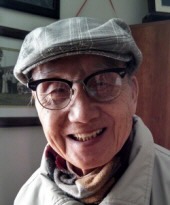The lotus is the most beautiful flower, whose petals open one by one. But it will only grow in the mud. In order to grow and gain wisdom, first you must have the mud — the obstacles of life and its suffering. … The mud speaks of the common ground that humans share, no matter what our stations in life. …

1918–2016
Professor Chi, as he was known locally .
A teacher I would be introduced to by Taiwanese soldiers attending training on US Army MIM-23 Hawk Missile Systems, in Huntsville Alabama home of Redstone Arsenal one of many US Army training centers. .
In my first meeting with him he had asked to see my taiji, he in his 60s at the time. Watching my movements he remarked (this is not taiji, its slow shaolin)
I said “okay” the practice started from this point.
He mentioned he had learned directly from Master Cheng Man Ching, he was one of the high school teachers for Master Cheng’s daughters in Taiwan. He had asked them if they would introduce him to their famous father who agreed to teach him, although not as a formal student.
He learned taiji from Master Cheng, but not the push hands part, even with out this component his practice was very deep.
He asked me to only do the opening movement, with a soft ” again” after each time the movement ended. This went on for some 60 min, until he saw what he was looking for. Something that I could not understand at the time.
Once this point was reached he would then add a couple of more movements . Each week that we met he would watch my movement. If it was correct he would add more movements with out saying much.
If it was not ,he would say “again” over, and over, always with a slight smile. For that week we would just work on that movement. At one point, out of frustration I asked him ” how do I know if it’s right or not” he said in his soft Taiwanese accented English
“after many years of practice you will know” he smiled, I laughed, and went back to practice.
In the end he was right, in that after many years one would know. It is said (off by one inch, miss it by one thousand miles) we must be very mindful in practice.
Through this process I learned to evaluate, ask, and answer ,my own questions. Little did I understand at the time, it would prove to be big asset in the future on my path leading to studying Taiji in China,
In my trips to China to study with master Zhang, I asked questions though an interpreter , if my understanding was correct or not. Master Zhang, invited questions, his answers through the art itself, allowing one to feel the answer.
One soon learned to be carful about asking questions the answers given directly hands on. My Chinese language skill not good enough to ask something directly. The only option was to practice, watch and listen. While others where asking questions, I practiced and listened to what was said.
I once asked the 1st grandson some questions on taiji practice, he said
” Your thinking is very western, ,taiji is not like this, its not a step by step process, it can not be explained in this manor”
The grandson’s voice very gentle, expressed through another student who could translate. While I do agree with what he said, and the idea in general my feelings about this method are:
“it works in a setting where the practice is expected to take many years, and is very consistent during this time. In other words for many people even the ones there, they may or may not get it, even after many years of practice.
To “get it” is not really the point of the practice.”
We are creating, building the foundations, through the practice.
It’s very important to build it in such a way so at some point, one will come to a point where the practice itself starts to unfold by its self.
To allow this to happen is the point of a practice.
Of course it helps to have a master level teacher guiding the practice, even with this there is no guaranty that one will get to a point where they will find it, or it will find them.

